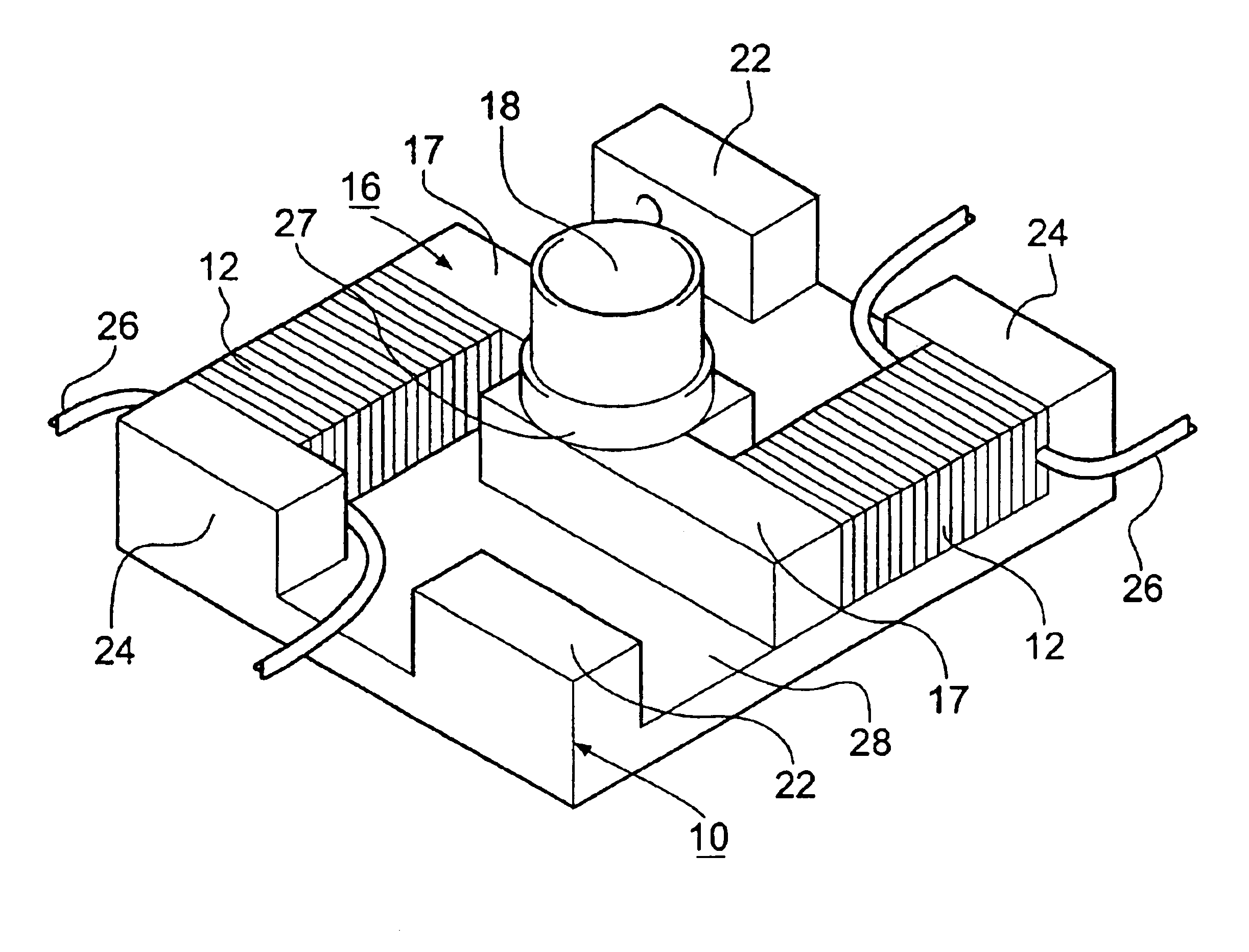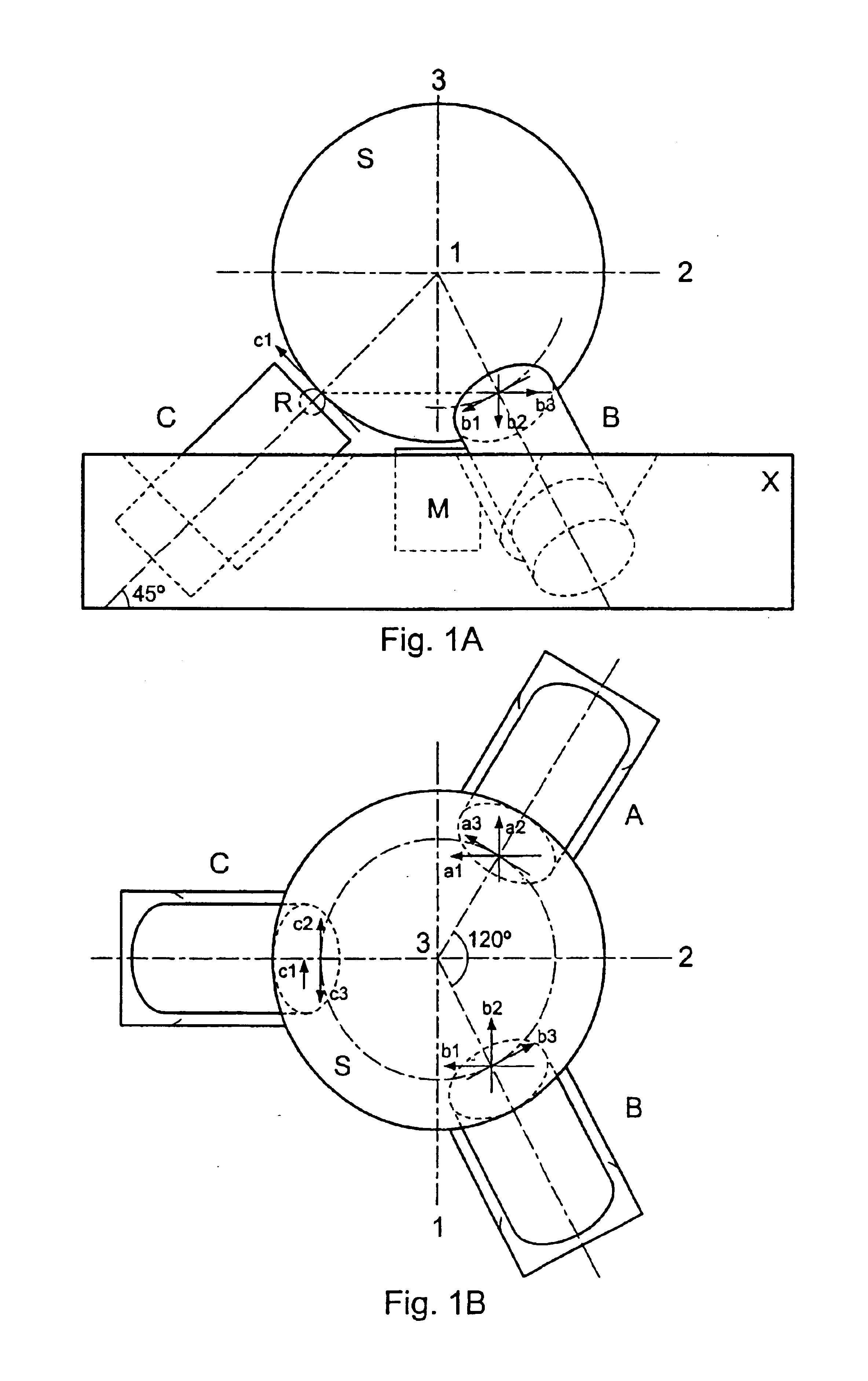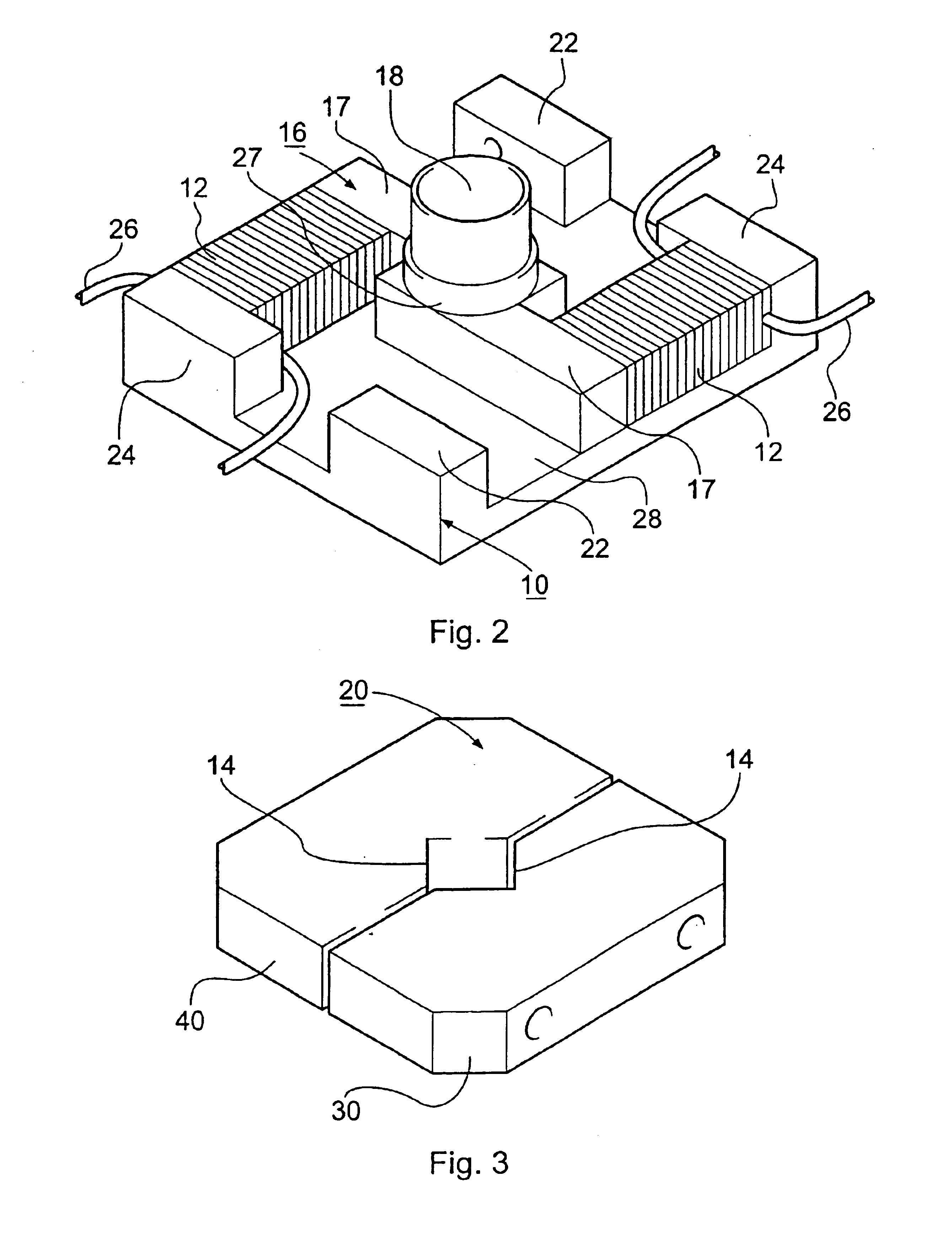Inertial rotation device
a technology of rotating device and rotating axis, which is applied in the direction of piezoelectric/electrostrictive device, acceleration measurement using interia force, instruments, etc., can solve the problems of wandering of the axis of rotation, poor reproducibility of step size, and limitations of prior art design, so as to reduce the clamping force
- Summary
- Abstract
- Description
- Claims
- Application Information
AI Technical Summary
Benefits of technology
Problems solved by technology
Method used
Image
Examples
example
[0040]Some specific parameters are now given for an example device according to the first embodiment. Dimensions: Base plate 20×24×4 mm. Base plate flanges: 7×3.5×4.5 mm, where 4.5 mm is the height dimension, i.e. the height of extension above the upper surface of the base plate. Column height is 6 mm. Column diameter is 5 mm in the upper portion and 6 mm below the abutment lip. The lateral extensions extend 10 mm from the rotation axis of the column and are 3 mm thick and 6 mm high. The piezoelectric actuators are 9 mm long with an area 5×5 mm. The top plate parts 30 and 40 each have external dimensions 24×12×6 mm. The V-groove depths are 3.5 mm and the V-groove angle 90 degrees. The threads and bores are for M2 bolts. The frictional engagement surfaces are coated with molybdenum disulphide, a solid lubricant. The base plate, top plate parts and rotation member are each single pieces of titanium. Titanium is used for its mechanical properties, and owing to it being non-magnetic. Th...
PUM
 Login to View More
Login to View More Abstract
Description
Claims
Application Information
 Login to View More
Login to View More - R&D
- Intellectual Property
- Life Sciences
- Materials
- Tech Scout
- Unparalleled Data Quality
- Higher Quality Content
- 60% Fewer Hallucinations
Browse by: Latest US Patents, China's latest patents, Technical Efficacy Thesaurus, Application Domain, Technology Topic, Popular Technical Reports.
© 2025 PatSnap. All rights reserved.Legal|Privacy policy|Modern Slavery Act Transparency Statement|Sitemap|About US| Contact US: help@patsnap.com



